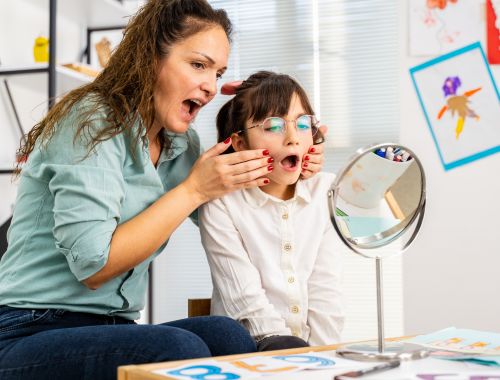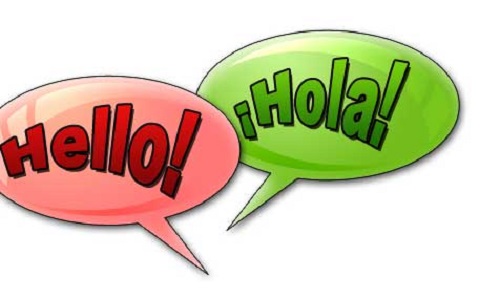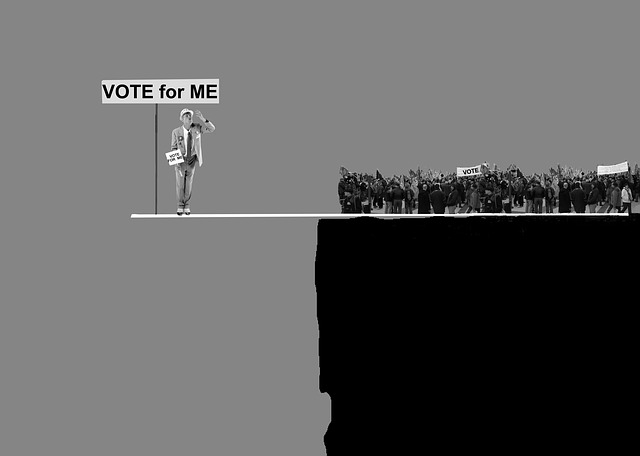
Navigating the Spectrum: Exploring the Similarities and Differences Among Types of Speech Therapy
Introduction
Speech therapy is a dynamic field that encompasses various types of interventions and techniques, each tailored to address specific communication challenges. These types of speech therapy share common goals of improving communication skills, but they also have distinct focuses and methodologies. In this 1500-word exploration, we will delve into the similarities and differences among the different types of speech therapy, shedding light on their unique roles in helping individuals overcome speech and language disorders.
Commonalities Among Types of Speech Therapy
1. Communication Enhancement
All types of speech therapy share the overarching goal of enhancing an individual’s communication abilities. Whether addressing speech sound disorders, language delays, or fluency issues, the ultimate aim is to improve the individual’s ability to express themselves effectively and understand others.
2. Assessment and Diagnosis
Irrespective of the type of speech therapy, thorough assessment and diagnosis are essential initial steps. Speech therapists use standardized assessments, informal observations, and client history to identify the specific nature and severity of the communication disorder.
3. Individualized Treatment Plans
Each type of speech therapy involves the development of an individualized treatment plan tailored to the client’s unique needs and goals. These plans are designed to address the specific challenges the client faces, ensuring targeted and effective intervention.
4. Evidence-Based Practices
Speech therapists across different types of therapy employ evidence-based practices, drawing from research and clinical expertise to guide their interventions. This ensures that therapy techniques are grounded in scientific principles and have demonstrated effectiveness.
5. Family and Caregiver Involvement
In many cases, involving family members and caregivers is integral to the therapeutic process. They are often educated on strategies to support and reinforce therapy goals outside of formal sessions.
Types of Speech Therapy: Similarities and Differences
Now, let’s explore the key similarities and differences among various types of speech therapy:
1. Articulation Therapy
Similarities:
- Focus on Pronunciation: Articulation therapy primarily targets the accurate production of speech sounds.
- Individualized Approach: Therapy plans are customized based on the specific speech sounds a client struggles with.
- Age Range: Applicable to both children and adults with speech sound disorders.
Differences:
- Targeted Sounds: Articulation therapy identifies and addresses specific speech sounds that a client has difficulty with, such as “r” or “s.”
- Sound Production: The core objective is achieving correct sound production.
- Techniques: Therapy may involve exercises like tongue placement and sound repetition.
2. Language Therapy
Similarities:
- Enhancing Communication: Language therapy aims to improve overall language skills, including comprehension and expression.
- Customized Plans: Treatment plans are tailored to address specific language deficits.
- Age Range: Applicable to clients of all ages with language delays or disorders.
Differences:
- Scope of Language: Language therapy encompasses receptive and expressive language, grammar, vocabulary, and social communication skills.
- Techniques: Therapy may involve activities like language games, storytelling, and structured exercises to target language deficits.
3. Fluency Therapy (Stuttering Therapy)
Similarities:
- Communication Enhancement: Both types focus on reducing disfluencies and improving speech fluency.
- Individualized: Treatment plans are customized based on the client’s specific stuttering patterns.
- Age Range: Relevant for clients of various age groups who stutter.
Differences:
- Stuttering Patterns: Stuttering therapy examines the nature of disfluencies (repetitions, prolongations) and applies techniques accordingly.
- Techniques: Techniques include speech modification strategies, relaxation exercises, and desensitization to reduce stuttering.
4. Voice Therapy
Similarities:
- Voice Improvement: Both types aim to enhance voice quality and vocal function.
- Personalized: Therapy plans are tailored to address the client’s specific voice disorders.
- Age Range: Suitable for individuals of all ages with voice disorders.
Differences:
- Voice Disorders: Voice therapy identifies and treats various voice disorders, such as vocal nodules, dysphonia, or vocal fold paralysis.
- Techniques: Techniques may include vocal exercises, breath support training, and vocal hygiene education.
5. Pragmatic Language Therapy
Similarities:
- Communication Enhancement: Pragmatic language therapy targets improved social communication skills.
- Tailored Plans: Treatment plans are designed to address the individual’s pragmatic deficits.
- Age Range: Applicable to clients of all ages with pragmatic language difficulties.
Differences:
- Social Communication: Pragmatic language therapy focuses on aspects like turn-taking, understanding nonverbal cues, and maintaining appropriate eye contact.
- Techniques: Therapy may involve role-playing, social scripts, and real-life social interactions to practice pragmatic skills.
6. Augmentative and Alternative Communication (AAC)
Similarities:
- Communication Enhancement: AAC aims to facilitate effective communication for individuals with severe speech and language disorders.
- Customized Plans: Treatment plans are highly individualized, considering the client’s specific needs and abilities.
- Age Range: Suitable for individuals of all ages who require AAC systems.
Differences:
- Communication Devices: AAC involves the use of communication devices or systems like communication boards, speech-generating devices, or sign language.
- Training and Implementation: AAC therapy focuses on training clients and their communication partners to use AAC systems effectively.
Here is a comparison table highlighting the similarities and differences among different types of speech therapy:
| Articulation Therapy | Language Therapy | Fluency Therapy (Stuttering Therapy) | Voice Therapy | Pragmatic Language Therapy | Augmentative and Alternative Communication (AAC) | |
| Common Goals | Pronunciation improvement | Enhancing overall | Reducing disfluencies and | Enhancing voice | Improving social | Facilitating communication for individuals with |
| language skills | improving speech fluency | quality and vocal | communication skills | severe speech and language disorders | ||
| Individualized Treatment Plans | Yes | Yes | Yes | Yes | Yes | Highly individualized plans |
| Age Range | Children and adults | All age groups | All age groups | All age groups | All age groups | All age groups |
| Scope | Targeting specific speech | Comprehension, expression, | Examining and addressing specific | Enhancing voice | Improving social | Focusing on communication devices and systems |
| sounds | grammar, vocabulary, | stuttering patterns | quality and vocal | communication skills | such as communication boards, speech-generating | |
| and social communication | function | pragmatics | devices, and sign language | |||
| Techniques | Exercises, repetition | Language games, | Speech modification strategies, | Vocal exercises, | Role-playing, social scripts | Training clients and communication partners to |
| drills | structured exercises | relaxation exercises | breath support, | real-life social interactions | use AAC systems effectively | |
| Disorders Addressed | Speech sound disorders | Language delays, | Stuttering disorders (repetitions, | Voice disorders such | Pragmatic language deficits | Severe speech and language disorders |
| receptive and expressive | prolongations, etc.) | as vocal nodules, | in social communication | requiring AAC systems | ||
| language disorders, | dysphonia, etc. |
This comparison table provides a concise overview of the similarities and differences among different types of speech therapy, helping individuals better understand the nuances of each approach and their specific areas of focus.
Frequently Asked Questions (FAQ) About Types of Speech Therapy
1. What is the primary goal of speech therapy in general?
- The primary goal of speech therapy is to improve an individual’s communication skills, which can encompass various aspects such as speech sounds, language comprehension and expression, fluency, voice quality, and social communication.
2. How are speech therapy sessions typically structured?
- Speech therapy sessions are structured based on the client’s needs and goals. They often involve assessment, goal setting, therapy activities, and progress tracking. Sessions may be one-on-one or in group settings, depending on the type of therapy and client’s age.
3. Is speech therapy only for children with speech delays?
- No, speech therapy is not limited to children. It is suitable for individuals of all ages, including adults. Speech therapists work with clients who have a wide range of communication disorders and challenges.
4. Are all types of speech therapy conducted by licensed speech therapists?
- Yes, all types of speech therapy should be conducted by licensed and certified speech-language pathologists (SLPs) or speech therapists. These professionals have the education and training to assess and treat communication disorders.
5. How can I determine which type of speech therapy is appropriate for me or my child?
- The type of speech therapy recommended depends on the specific communication challenges and goals. An initial evaluation by a licensed speech therapist will help determine the most suitable approach.
6. Are there any online resources or apps for speech therapy?
- Yes, there are many online resources and speech therapy apps that can complement in-person therapy. However, it’s important to use them under the guidance of a licensed speech therapist to ensure they align with the individual’s treatment plan.
7. Can speech therapy help with non-verbal communication?
- Yes, speech therapy, particularly augmentative and alternative communication (AAC), is designed to assist individuals with non-verbal or limited verbal communication. AAC systems can include communication boards, speech-generating devices, and sign language.
8. Is speech therapy covered by insurance?
- In many cases, speech therapy is covered by insurance, especially when it is deemed medically necessary. Coverage may vary depending on the insurance provider and the individual’s diagnosis. It’s advisable to check with your insurance company for specific details.
9. How long does speech therapy typically last?
- The duration of speech therapy varies depending on the individual’s needs and progress. Some clients may achieve their goals in a few months, while others may require therapy for a longer period. The therapist will continually assess progress and adjust the treatment plan accordingly.
10. Can speech therapy be fun for children and engaging for adults?
- Yes, speech therapy is often designed to be engaging and enjoyable, especially for children. Therapists use games, activities, and interactive exercises to make sessions fun and effective. For adults, therapy may include practical real-life scenarios to enhance engagement.
These FAQs offer insights into common questions about types of speech therapy, helping individuals and families better understand the nature of speech therapy and its various aspects.
Conclusion
Types of speech therapy share commonalities in their overarching goal of improving communication skills, individualized treatment plans, and evidence-based practices. However, they also exhibit distinct differences in their specific areas of focus, techniques, and client populations. Understanding these similarities and differences is crucial for both speech therapists and individuals seeking therapy, ensuring that interventions are precisely tailored to address specific communication challenges and promote successful outcomes.












Leave a Reply